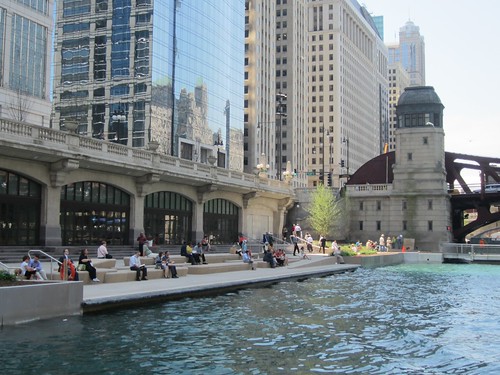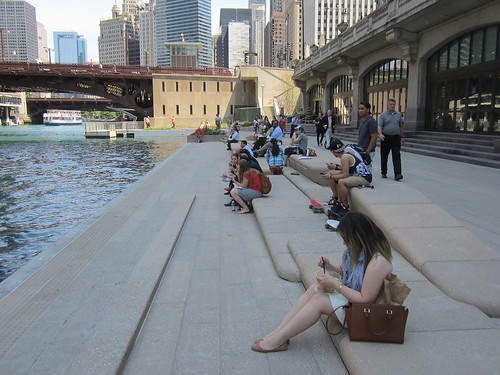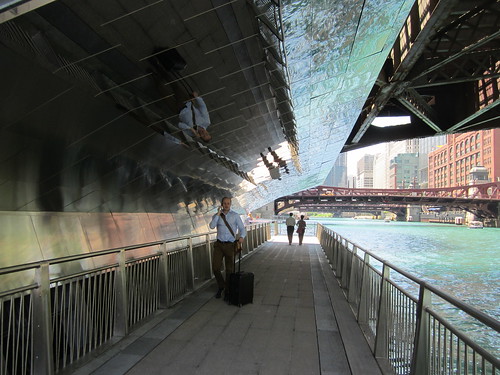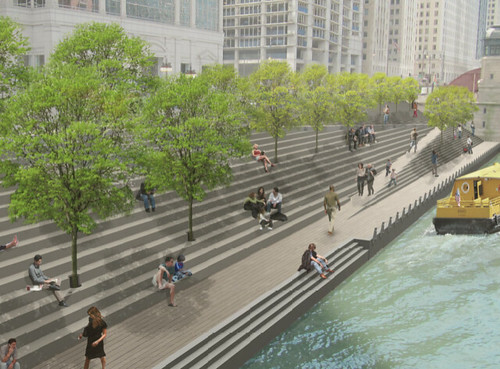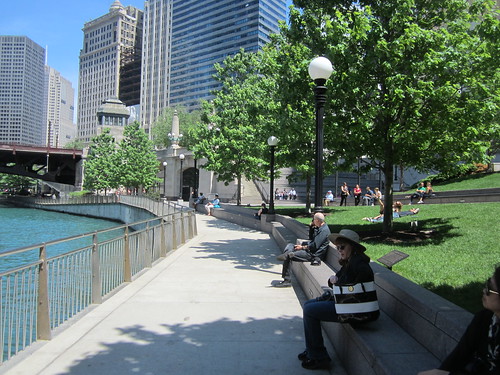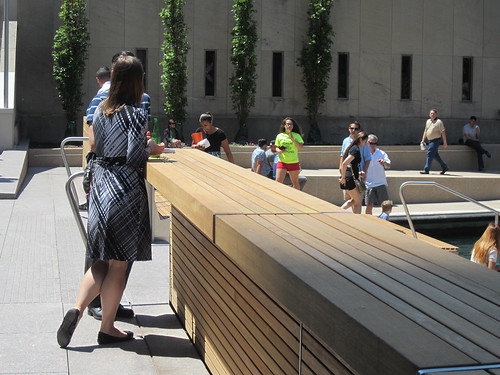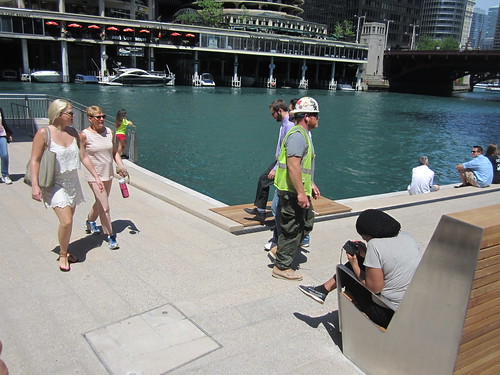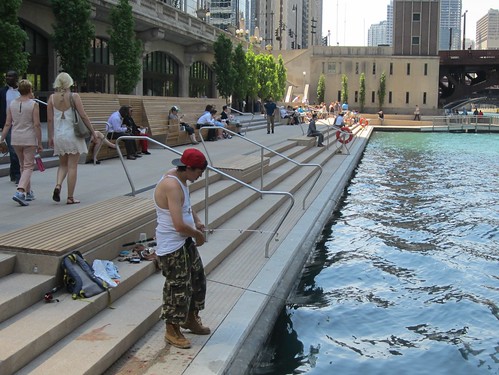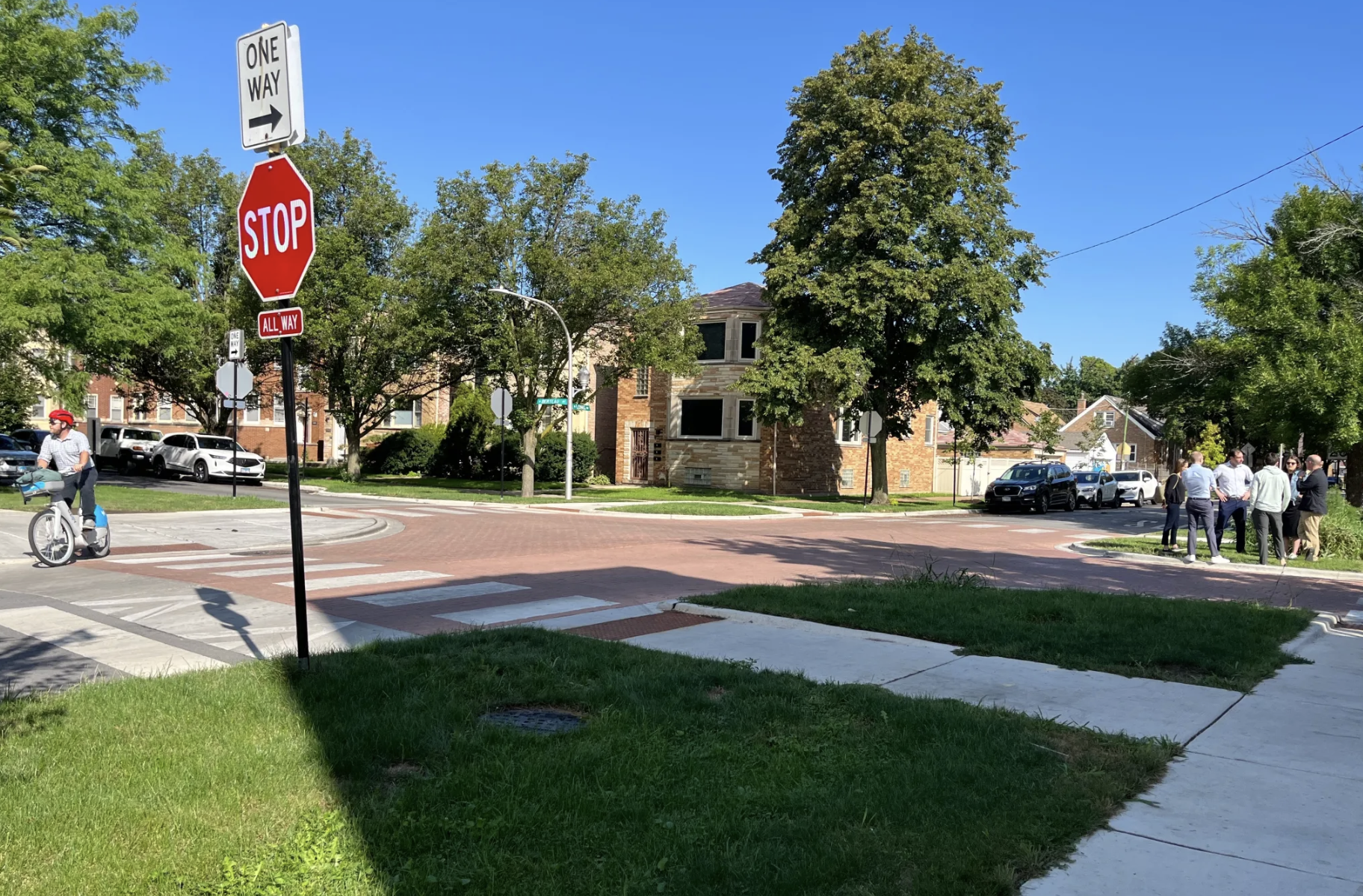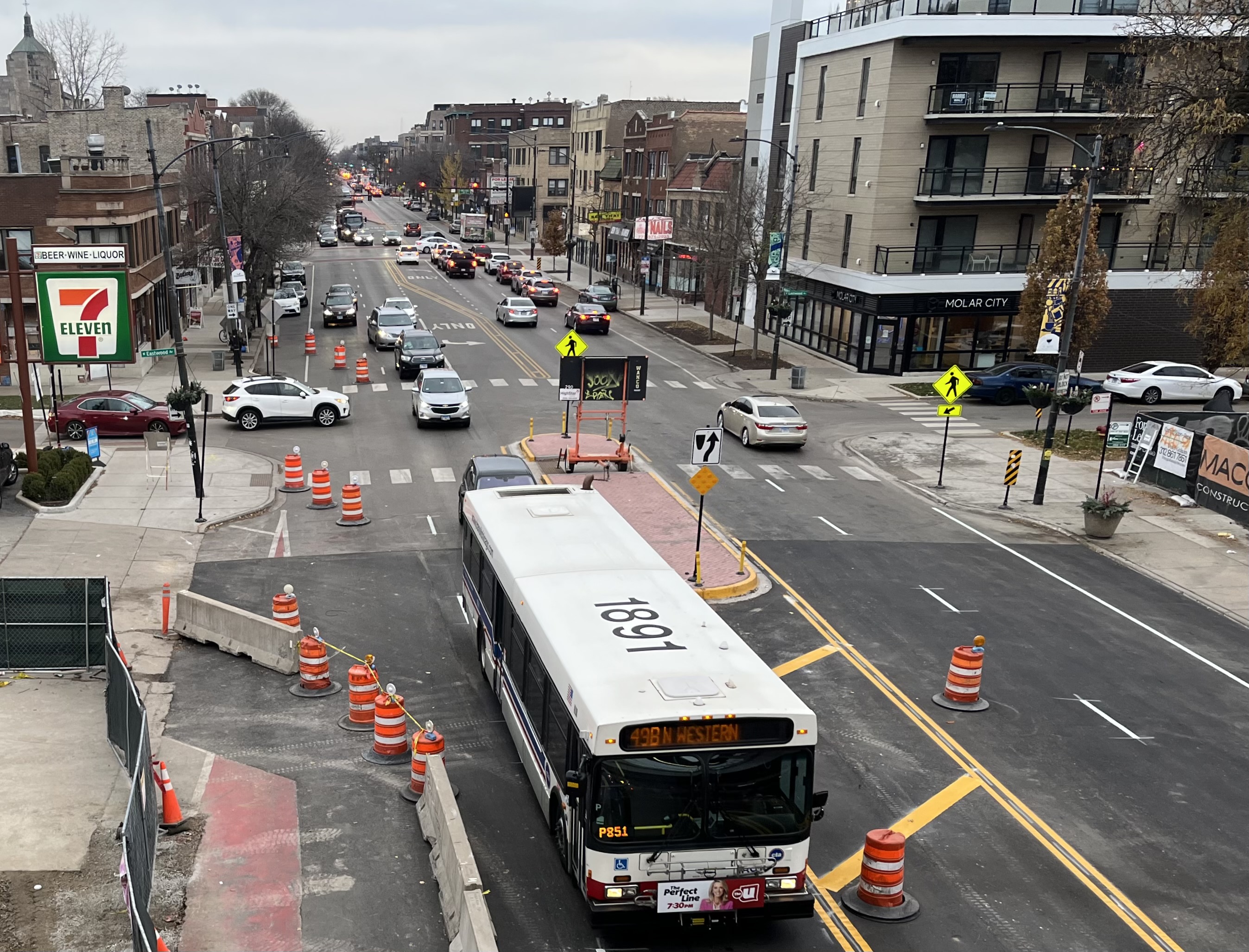Just as Richard M. Daley made his mark on Chicago with Millennium Park, Rahm Emanuel is creating a number of marquee public space projects, including the redevelopment of Northerly Island, Maggie Daley Park, and the Bloomingdale Trail. The latest is a new, two-block stretch of the Chicago Riverwalk, between State and Clark, which opened on Saturday. The riverwalk extension is slated to reach Lake Street and Wacker Driver next year, creating a car-free pedestrian and bike route all the way to Lake Michigan.
The project is funded by a roughly $100 million federal Transportation Infrastructure Finance Innovation Act loan. Chicago plans to pay back the loan in about 35 years, with most of the revenue coming from rental and retail concession fees, plus riverside advertising. Last week, Emanuel announced the roster of concessionaires, which includes the bike rental companies Bike and Roll Chicago (a Streetsblog Chicago sponsor), WanderBikes, and Wheel Fun Rentals, plus various boat tour and rental companies, restaurants, cafes and bars.
All of the new sections of the riverwalk, delineated by the bridges, will have designated themes, such as “The Water Plaza,” “The Jetty,” and “The Boardwalk.” The now-open section between State and Dearborn is called “The Marina” and will feature restaurants and places for boats to dock. “The Cove,” from Dearborn to Clark, will offer kayak rentals.
“The River Theater,” located between Clark and LaSalle, and scheduled to open next month, will feature steps and wheelchair ramps leading down from Upper Wacker to the river. The steps will double as seating, making it an ideal spot for performances that will be booked by the Department of Cultural Affairs and Special Events later this summer.
Yesterday around noon, when Steven Vance and I dropped by to check out the new sections, the public space was filled with a diverse mix of Chicagoans and visitors relaxing, eating lunch, and watching tour boats and kayakers go by. They seem to be attracting more people than the older portions of the riverwalk, such as the section with between Wabash and State, which is home to a Vietnam War memorial. That’s likely due to the novelty of the just-opened spaces, as well as their higher quantity of seating.
Steven and I both appreciated interesting new views of the city from places where the walkway juts into the river, such as when the path goes around bridge houses. We were also impressed by the high-quality materials that were used for fixtures like the comfy, high-backed wooden banquettes in The Marina. The tops of these benches extend backwards, so they will double as counter seating for the patrons of the eateries and drinking establishments that will soon be opening behind them.
Steven was less enthusiastic about narrow sections of the walkway that create bottlenecks, as well as right-angle routing that’s tricky to navigate when the path is crowded. As commenters on The Chainlink social networking site have pointed out, the new sections are not ideal for biking – when they’re crowded, cyclists will probably need to walk their bikes through these segments. Since it’s not easy to walk or pedal efficiently on the new stretches, it’s a little odd that they were bankrolled by federal transportation dollars.
That said, riverwalk users I spoke to gave the facility rave reviews. “It’s wonderful,” said local sports event planner Roechard Lewis, who was texting on one of The Cove’s concrete seating units. “It’s relaxing and peaceful, a great place to take a break. I had some meetings downtown, so I came here to chill out for a moment.”
“The seating is really nice,” said a college student named Joanna, visiting from Kitchener, Ontario. She decided to check out the space after it was pointed out by the tour guide on a boat cruise. “This is a great place to eat lunch.”
Jeffrey Williams, who was fishing in The Marina, said that he likes the fact that the new spaces is only a couple of feet above the river, while the older sections are about ten feet above the water and are fenced off. He said he’s caught four (non-Asian) carp while fishing in the Chicago River, although he doesn’t think fish from the less-than-pristine water are safe to eat. “Now, when I catch a fish, I can just bend down and pick it up.”
